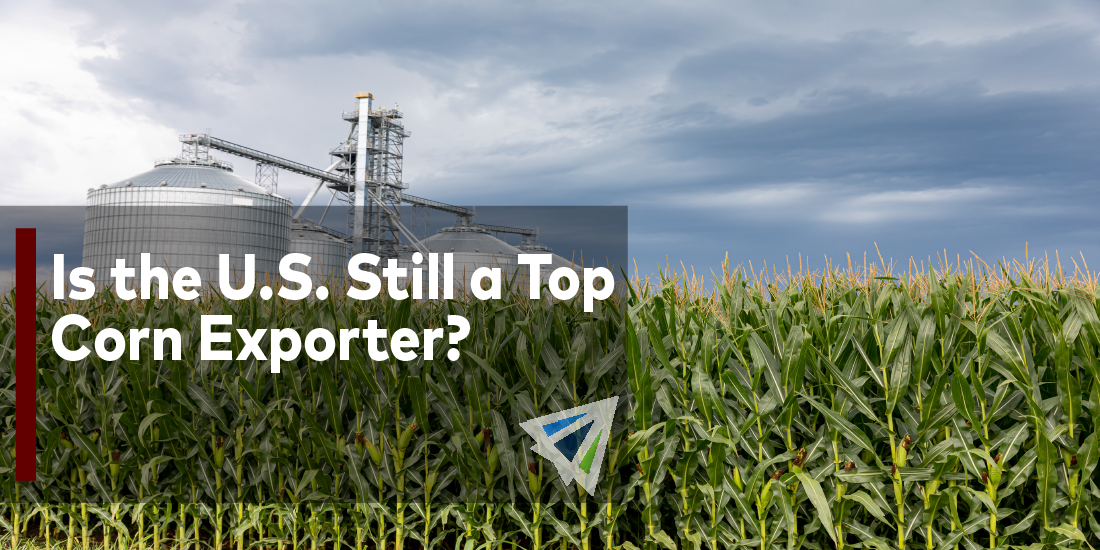A new era in the history of agriculture is being ushered in by the dramatic alteration of the world market for corn exports. For more than 50 years, the United States had remained the world’s top corn exporter, supplying the majority of the world’s cattle, building up reserves, and supporting the processed food sector. However, as Brazil rises to take the top spot in grain exports, the period of American dominance has come to an end.
U.S. vs. Brazil: A Shift in Export Activity
The United States gave up its long-held position to Brazil in the agricultural year that ended on August 31. In contrast to Brazil’s dominant 32% share, the U.S. will export about 23% of the world’s maize in the forthcoming harvest year of 2023, according to data from the U.S. Department of Agriculture. On September 1, the planting year 2024 will begin, and Brazil is prepared to keep the lead. This is a historic turning point because the United States has never previously finished second in corn exports for two years in a row.
American farmers are accustomed to this changing environment as they have seen comparable changes in other agricultural industries. The United States lost its top positions in wheat and soybean exports over the past ten years as well. In 2013, Brazil decisively surpassed the United States in soybean exports, while the European Union and Russia arose as strong competitors on the global wheat market.
Several Factors Attributed to Drop in U.S. Corn Exports
This modification in corn exports is the result of numerous variables. A number of factors have contributed to this, including increasing production costs, a lack of suitable farmland, the effects of the former president Donald Trump’s trade fights with China, and a strong dollar. As a result of its waning influence in these markets, the United States today controls barely one-third of global soybean exports and ranks fifth in global wheat exports.
This fall is a serious setback for a nation that has historically used food as a geopolitical weapon. The United States strategically employed its ample food supplies to thwart the development of communism in emerging countries during the Cold War. Even Russia received assistance from it, receiving a sizable share of its wheat after a crop catastrophe in the 1970s.
An accomplished consultant and trader named Ann Berg compared the United States to a frog that is slowly boiling, observing that it has progressively lost its dominance over the past four decades.
Since the American government has encouraged the use of domestically farmed maize for the creation of ethanol, which is added to gasoline, the change in corn exports was somewhat anticipated. About 40% of U.S. corn is used to fuel domestic ethanol mills, but as electric vehicles grow more common, this need may meet difficulties. Additionally, surplus maize can be kept in silos for a long time while waiting for favorable market conditions.
Brazil’s investments in port infrastructure and its capacity to produce two corn harvests yearly give it a competitive edge. While problems for the U.S. corn business in international markets still exist, including greater labor and transportation costs and the impact of drought on trade routes, Brazil has a competitive advantage. Long-term, it appears improbable that the U.S. would entirely retake its position as Brazil’s leading grain exporter.
This change has significant ramifications for a nation whose cultural identity is tied to the idea of “amber waves of grain.” 78% of the wheat, 54% of the soybeans, and 45% of the corn produced in the United States were previously exported. Forecasts predict that these numbers will fall to 40%, 43%, and 14%, respectively, in 2024. Furthermore, the U.S. exports fewer crops globally as a whole than other countries.
Grain Trade Shift to Brazil Affects America-China Relations
Brazil’s emergence as a significant exporter of agricultural goods also has geopolitical ramifications. China, a major consumer of American crops, has signed deals with Brazil to diversify its suppliers and lessen its reliance on the United States. The first shipment of corn from Brazil under this new agreement left port in November, signifying a change in the dynamics of international trade.
While the United States continues to be a leader in agriculture, the changing environment highlights the need for innovation and adaptability in a constantly shifting global market. Brazil will soon be the world’s top corn exporter, and this will present a dynamic and difficult future for the agriculture sector.
